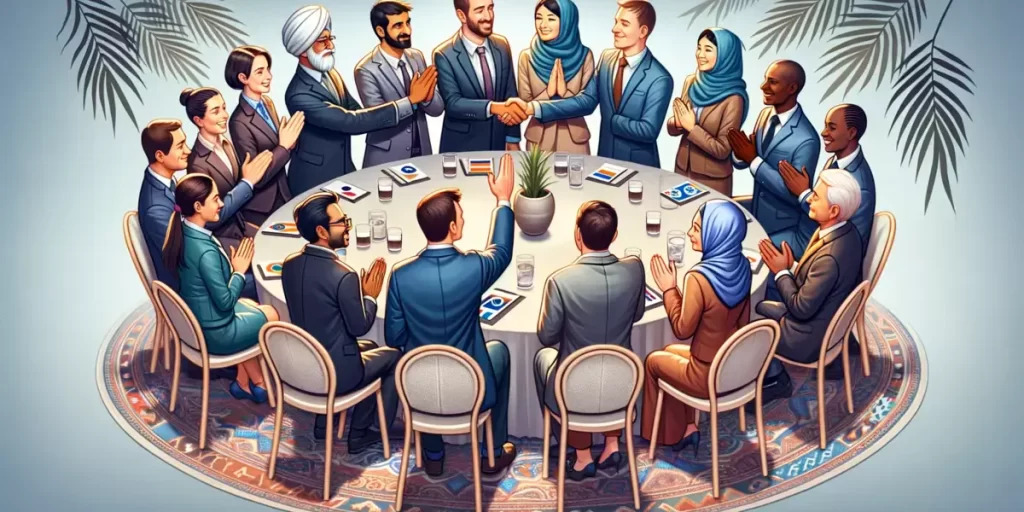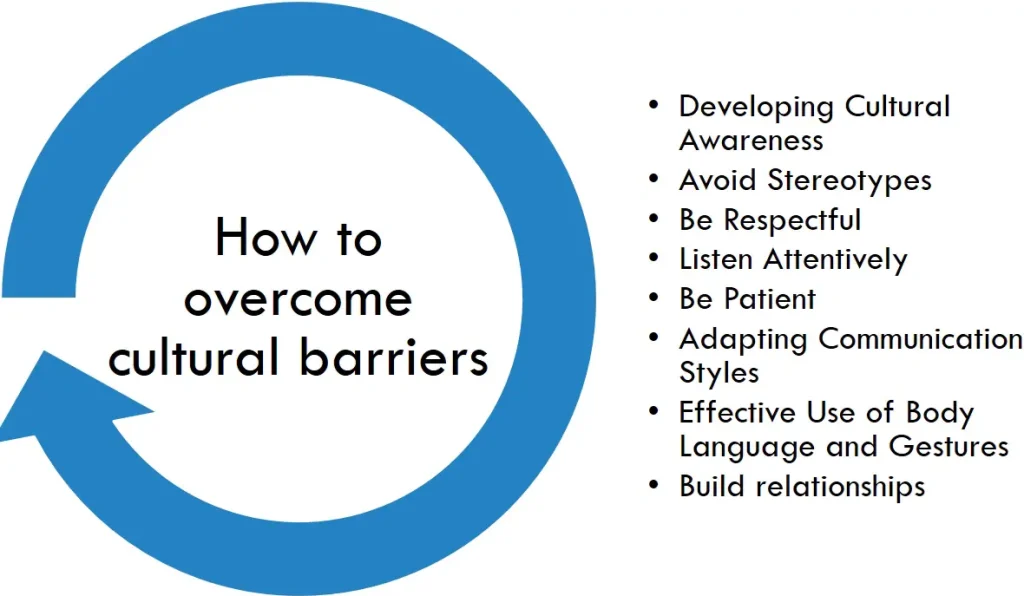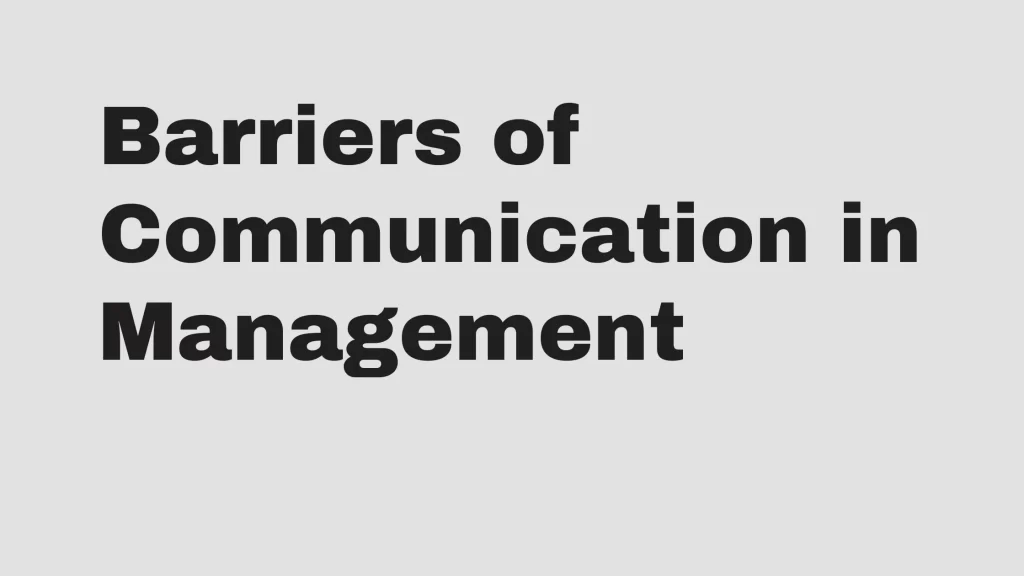Cultural communication barriers are obstacles that hinder effective communication between individuals from different cultural backgrounds. These barriers arise from differences in language, beliefs, values, and norms. One of the most common cultural barriers to communication is language. It is difficult for people who speak different languages to communicate effectively with each other.
Even when both parties have some knowledge of each other’s language, there may be misunderstandings due to differences in grammar, pronunciation, or usage.
Another barrier can be found in beliefs and values; what one culture considers acceptable might not be accepted by another. This can lead to a lack of understanding and even conflict between individuals or groups from different cultures.
Contents
Cultural Barriers to Communication Definition
Cultural communication barriers refer to the challenges that arise when people from different cultural backgrounds try to communicate with each other. These barriers include language differences, cultural norms, and values, non-verbal communication differences, and preconceived notions about other cultures.

Types of Cultural Barriers
Various cultural barriers can hinder effective communication. Some of the common types of cultural barriers include:
- Language barriers: When people from different cultures speak different languages, it can be difficult to communicate effectively.
- Non-verbal communication barriers: Different cultures have different body language and gestures that can lead to misunderstandings.
- Cultural norms and values: People from different cultures have different beliefs and values, which can impact how they communicate.
- Preconceived notions: People may have preconceived notions about other cultures, leading to stereotypes and misunderstandings.
Preconceived Notions
Stereotypes and biases about other cultures can lead to misunderstandings. It’s important to approach intercultural communication with an open mind.
Personal Anecdote
Consider Sarah, who worked in an international team. She initially struggled with cultural misunderstandings but improved communication by learning about her colleagues’ cultural backgrounds and adjusting her communication style accordingly.
Expert Insights
Dr. John Smith, a cultural communication expert, states, “Developing cultural awareness and empathy is crucial for overcoming cultural barriers in communication.”
Practical Tips
- Promote Awareness: Develop awareness of cultural differences.
- Active Listening: Pay attention to non-verbal cues and context.
- Avoid Stereotypes: Approach each person as an individual.
- Develop Skills: Provide training on intercultural communication.
Causes of Cultural Barriers
Cultural barriers can arise due to various factors. Some of the common causes of cultural barriers include:
- Lack of awareness: People may need to be aware of the cultural differences between them and others.
- Different communication styles: People from different cultures may have different communication styles that can lead to misunderstandings.
- Different frames of reference: People from different cultures may have different frames of reference, leading to different interpretations of the same message.
- Different cultural backgrounds: People from different backgrounds may express themselves differently, leading to misunderstandings.

Impact of Cultural Barriers on Communication
Misunderstanding and Conflict
Cultural barriers can lead to misunderstandings and conflicts in communication. These barriers can arise due to language, beliefs, values, and customs differences. For instance, someone speaking a different language may need help effectively convey their meaning and action. Similarly, the context of globalization and free trade has led to an increase in cross-cultural communication, which has made it necessary to overcome cross-cultural barriers.
Ineffective Communication
Cultural barriers can also lead to ineffective communication. For example, someone must understand the cultural norms and values of the person they are communicating with to convey their message effectively. This can lead to misunderstandings and a communication breakdown.
How to overcome cultural barriers in communication
Developing Cultural Awareness
To overcome cultural communication barriers, it is crucial to develop cultural awareness. This involves understanding different cultures’ cultural norms and values and the cultural perspective of people from different cultures. One should also put aside preconceived notions and frames of reference when communicating with people from different cultural backgrounds.
Avoid Stereotypes
It’s easy to fall into the trap of stereotyping people from different cultures. However, this only perpetuates cultural barriers in communication. Avoid making assumptions about people based on race, ethnicity, or nationality. Instead, focus on getting to know people as individuals.
Be Respectful
Respect is a universal value that transcends cultural boundaries. When communicating with people from different cultures, showing respect for their customs and traditions is essential. This can involve using appropriate titles, greetings, and gestures.

Listen Attentively
Effective communication is a two-way street. When communicating with people from different cultures, listening attentively to what they are saying is important. This involves paying attention to non-verbal cues, such as body language and facial expressions, which can provide additional context to the conversation.
Be Patient
Being patient and understanding is important when dealing with people from different cultures. Take the time to clarify any misunderstandings, and be willing to repeat yourself if necessary.
Adapting Communication Styles
Adapting communication styles is also important in overcoming cultural barriers. People from different cultural groups may find communicating easier if they know each other’s communication styles. It is important to learn how to adapt to different communication styles to avoid conflicts of ideas.
Effective Use of Body Language and Gestures
Non-verbal communication, like body language and gestures, is also a crucial barrier in cross-cultural communication. Awareness of the various cultural barriers in non-verbal communication is important. For example, shaking hands may be seen as a sign of respect in the Western world, but it may not be appropriate in some cultures. Effective use of body language and gestures can help convey messages accurately and avoid misunderstandings.
Build relationships
Effective communication is built on trust and respect. Building relationships with people from different cultures can help you overcome cultural barriers. Take the time to get to know the person and their culture. Show interest in their customs, traditions, and beliefs. This will help you build rapport and establish a level of trust that can make communication easier.
Cultural Barriers in the Workplace
Cultural barriers in the workplace refer to the challenges and misunderstandings that can arise when individuals from diverse cultural backgrounds interact. These barriers can affect communication, teamwork, and overall workplace harmony. Here are some common cultural barriers in the workplace:
- Language Differences: Variations in language and proficiency can lead to misunderstandings, misinterpretations, and difficulties in expressing ideas and instructions clearly.
- Non-verbal Communication: Different cultures use body language, facial expressions, gestures, and eye contact differently. Misreading these non-verbal cues can lead to misunderstandings and miscommunication.
- Cultural Norms and Values: Different cultures have varying norms and values regarding hierarchy, time management, work ethic, and conflict resolution. These differences can lead to misunderstandings and conflicts if not properly managed.
- Assumptions and Stereotypes: Preconceived notions and stereotypes about different cultures can lead to biases, discrimination, and misunderstandings in the workplace.
- Different Communication Styles: Cultures vary in their communication styles; some may be direct and explicit, while others may be indirect and rely heavily on context. Misunderstandings can arise when these styles clash.
- Perceptions of Authority and Hierarchy: Cultural attitudes towards authority and hierarchy can differ significantly. In some cultures, questioning or challenging authority is common, while in others, it is seen as disrespectful.
- Work-Life Balance Expectations: Different cultures have different expectations regarding work-life balance, including attitudes towards overtime, vacation, and personal time. These differences can lead to misunderstandings and conflicts.
- Decision-Making Processes: Cultures differ in their approach to decision-making. Some may prefer consensus and collective decision-making, while others may favor individual decision-making.
- Attitudes Towards Conflict: Cultural differences in handling conflict can lead to misunderstandings. Some cultures may be more confrontational, while others may avoid conflict and prefer to maintain harmony.
- Dress Codes and Personal Appearance: Cultural differences in dress codes and personal grooming can lead to misunderstandings and discomfort in the workplace.
Conclusion
Cultural communication barriers can create significant challenges in personal and professional relationships. Understanding and addressing these barriers is crucial for effective communication.
To overcome cultural barriers, individuals need to develop cultural competence. This involves learning about different cultures, values, beliefs, and communication styles. Individuals can avoid misunderstandings and build stronger relationships by being aware of cultural differences.
In addition, effective communication requires active listening, empathy, and respect. Individuals should avoid making assumptions, stereotyping, or judging others based on their cultural background. Instead, they should seek to understand and appreciate cultural differences.
Finally, organizations need to create a culture of inclusion and diversity. This involves promoting cultural awareness and training employees to develop cultural competence. Organizations can create a more productive and harmonious workplace by embracing diversity and inclusivity.
Cultural communication barriers can be overcome by developing cultural competence, practicing effective communication skills, and promoting diversity and inclusivity. By doing so, individuals and organizations can build stronger relationships and achieve greater success.
Boko Ducky has over 10 years of experience in helping individuals and organizations improve their communication skills.



